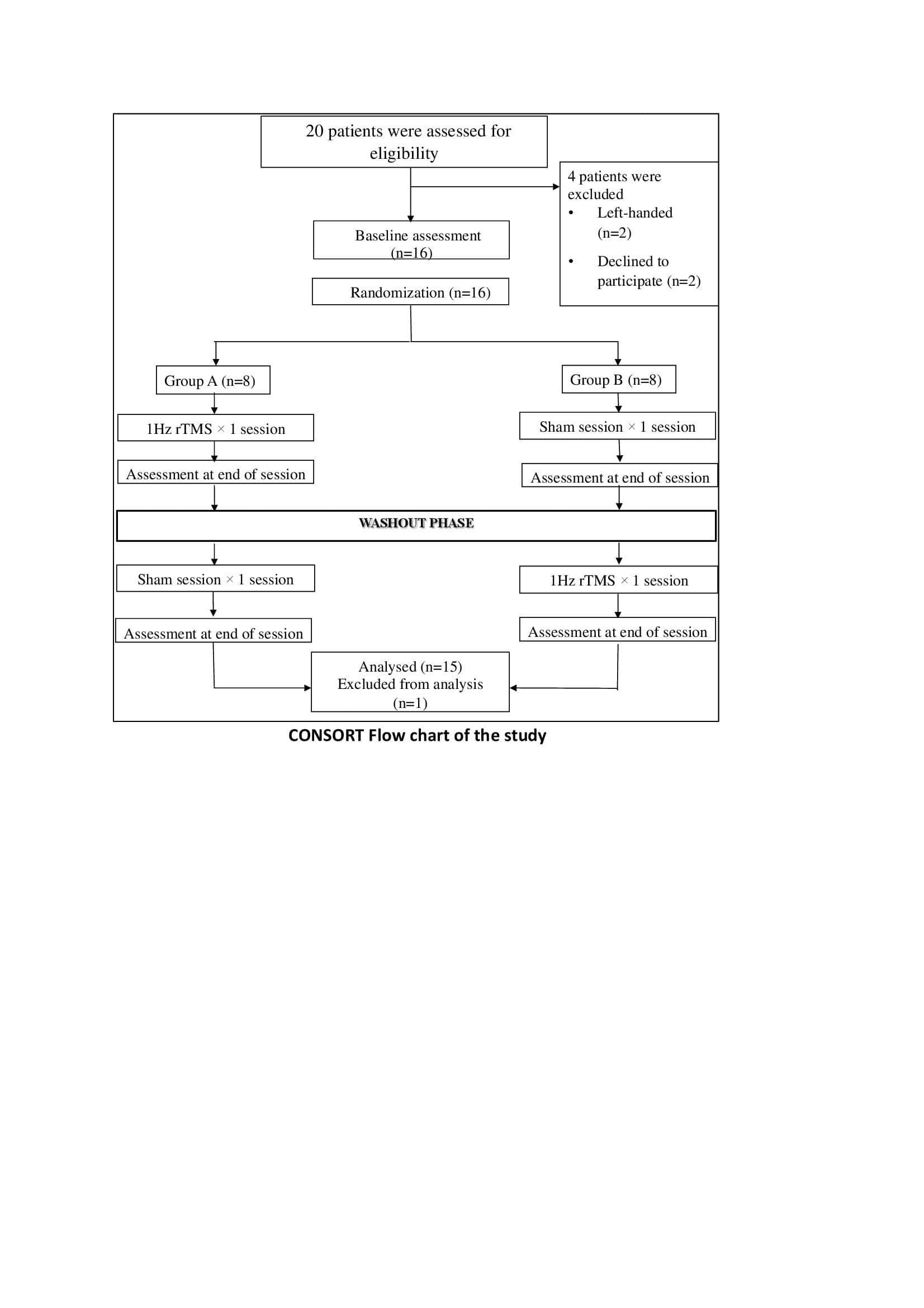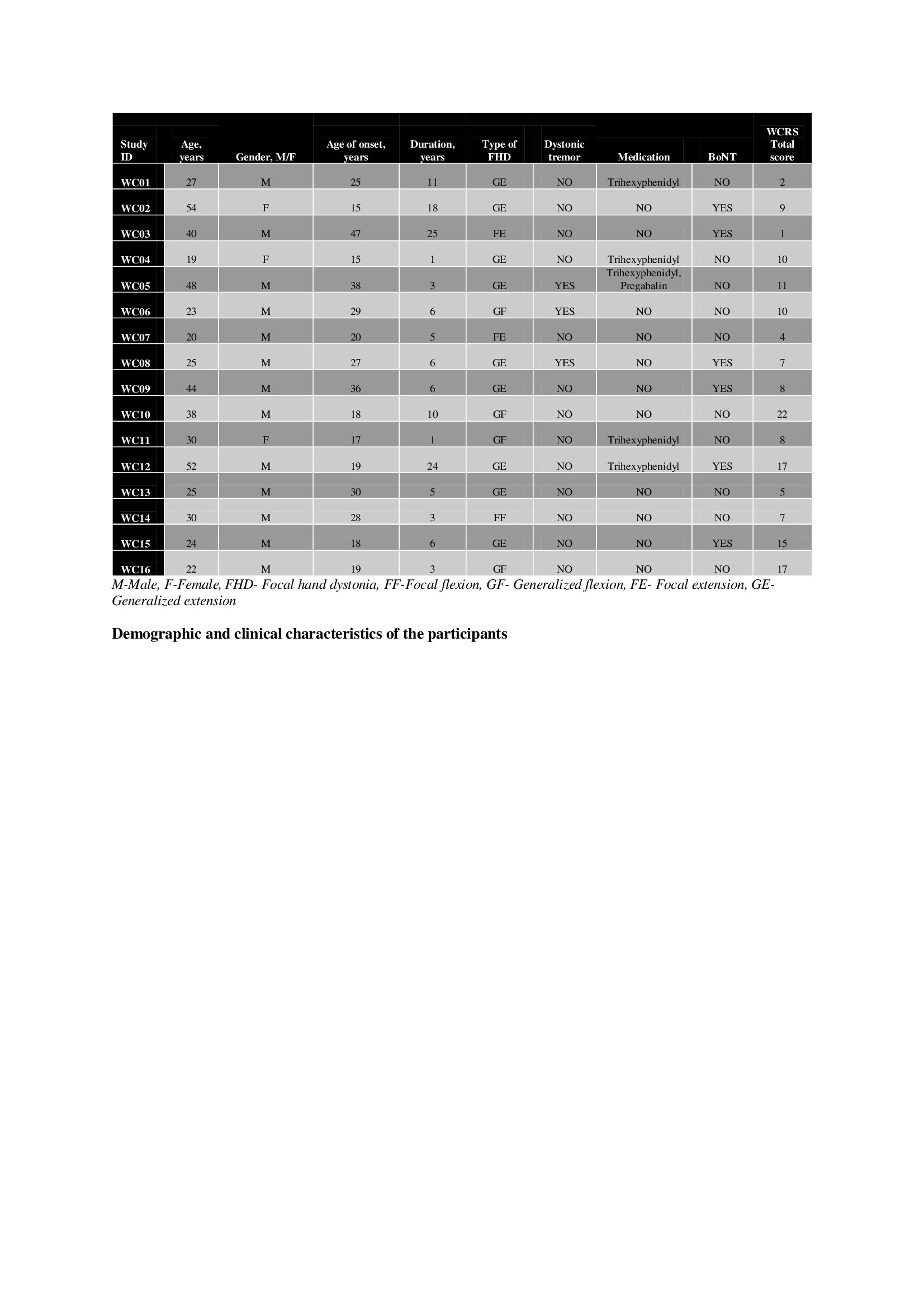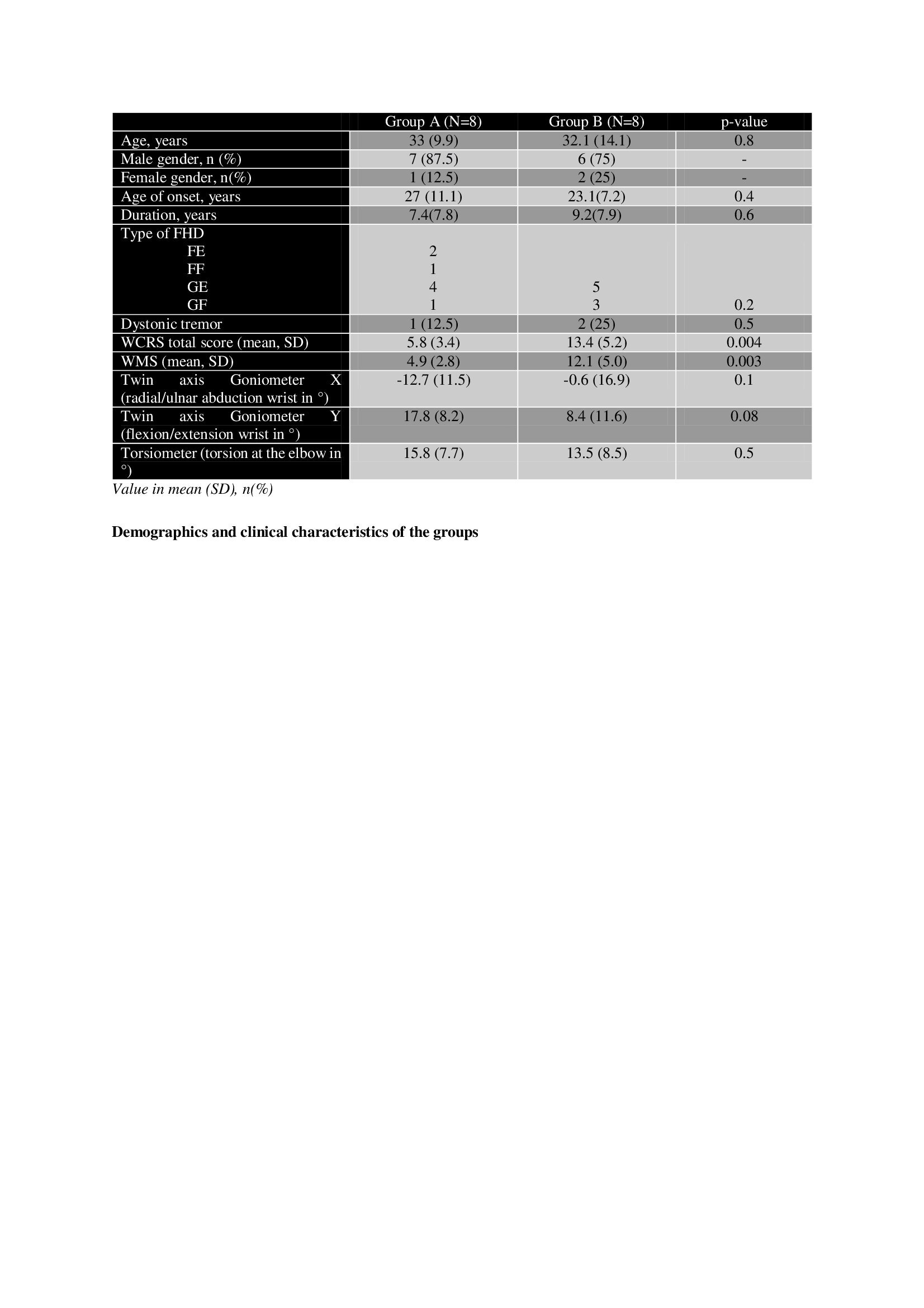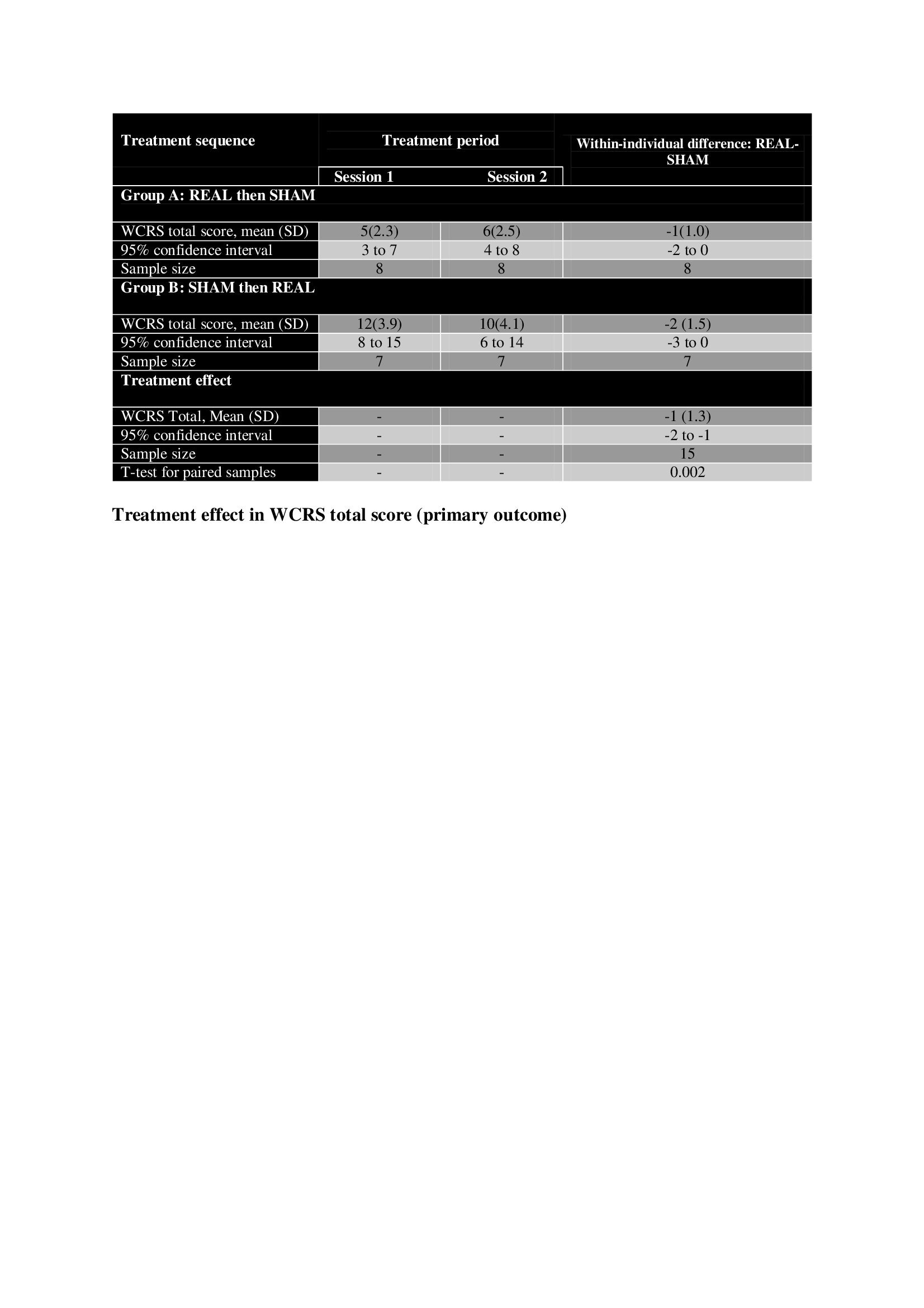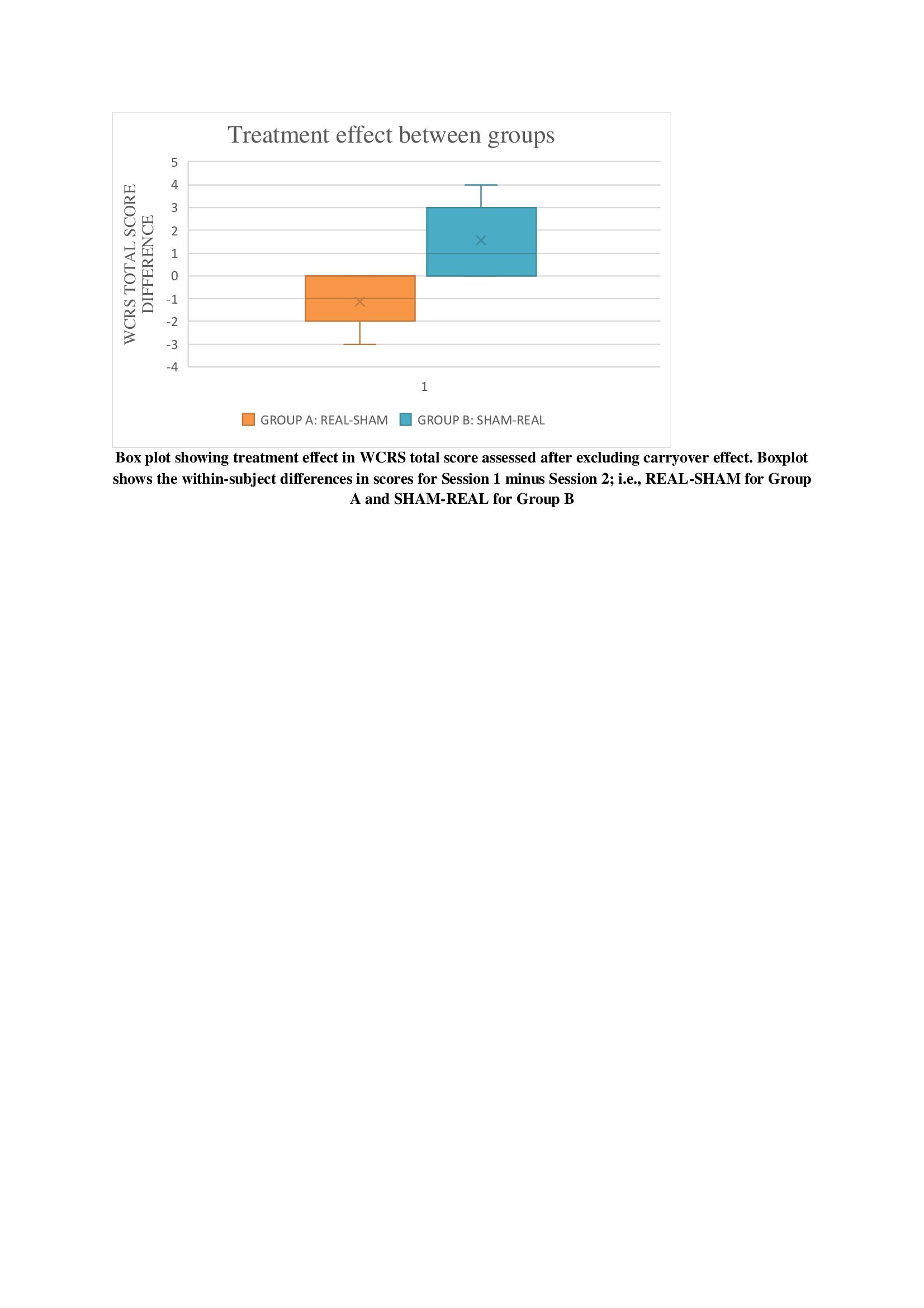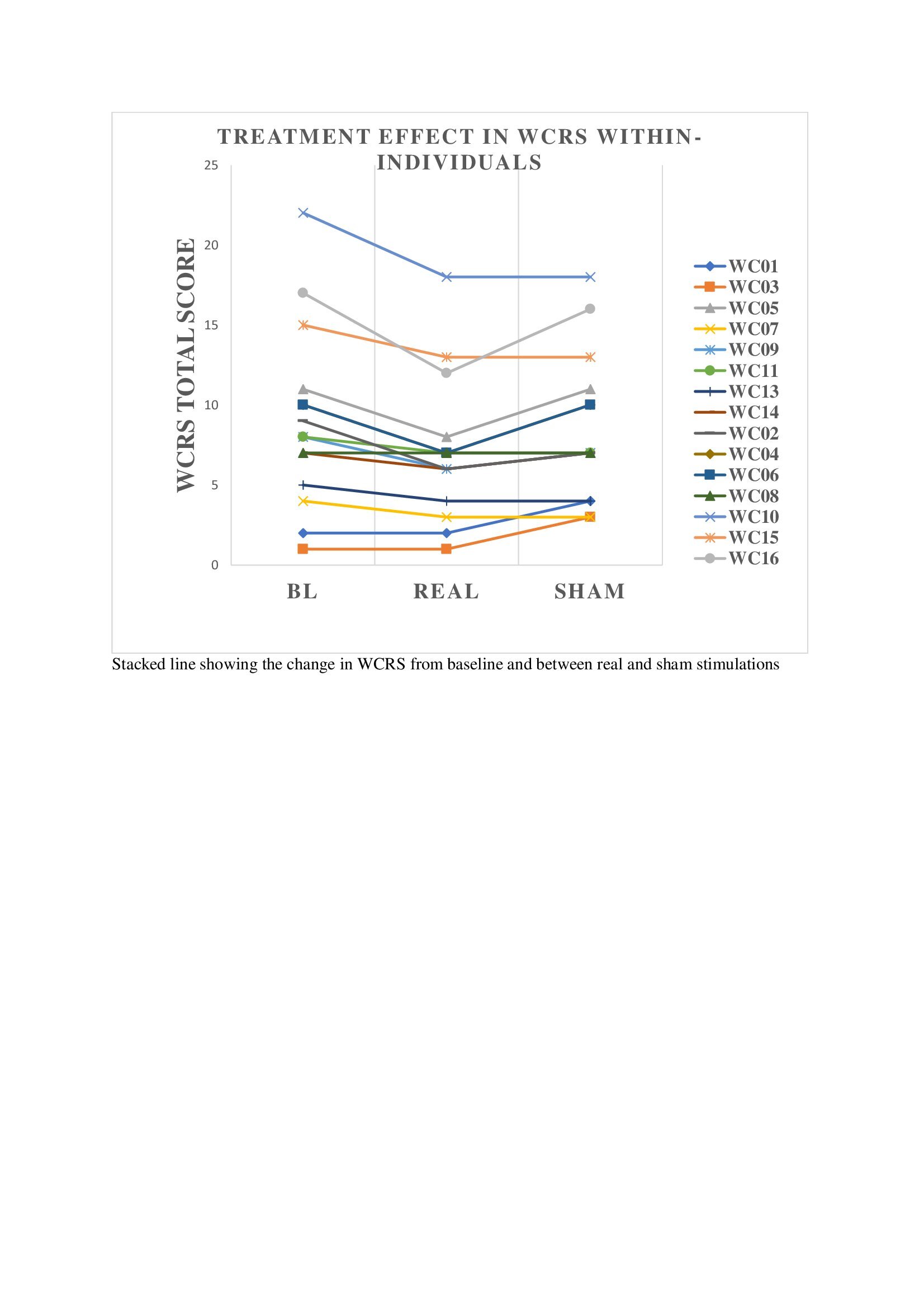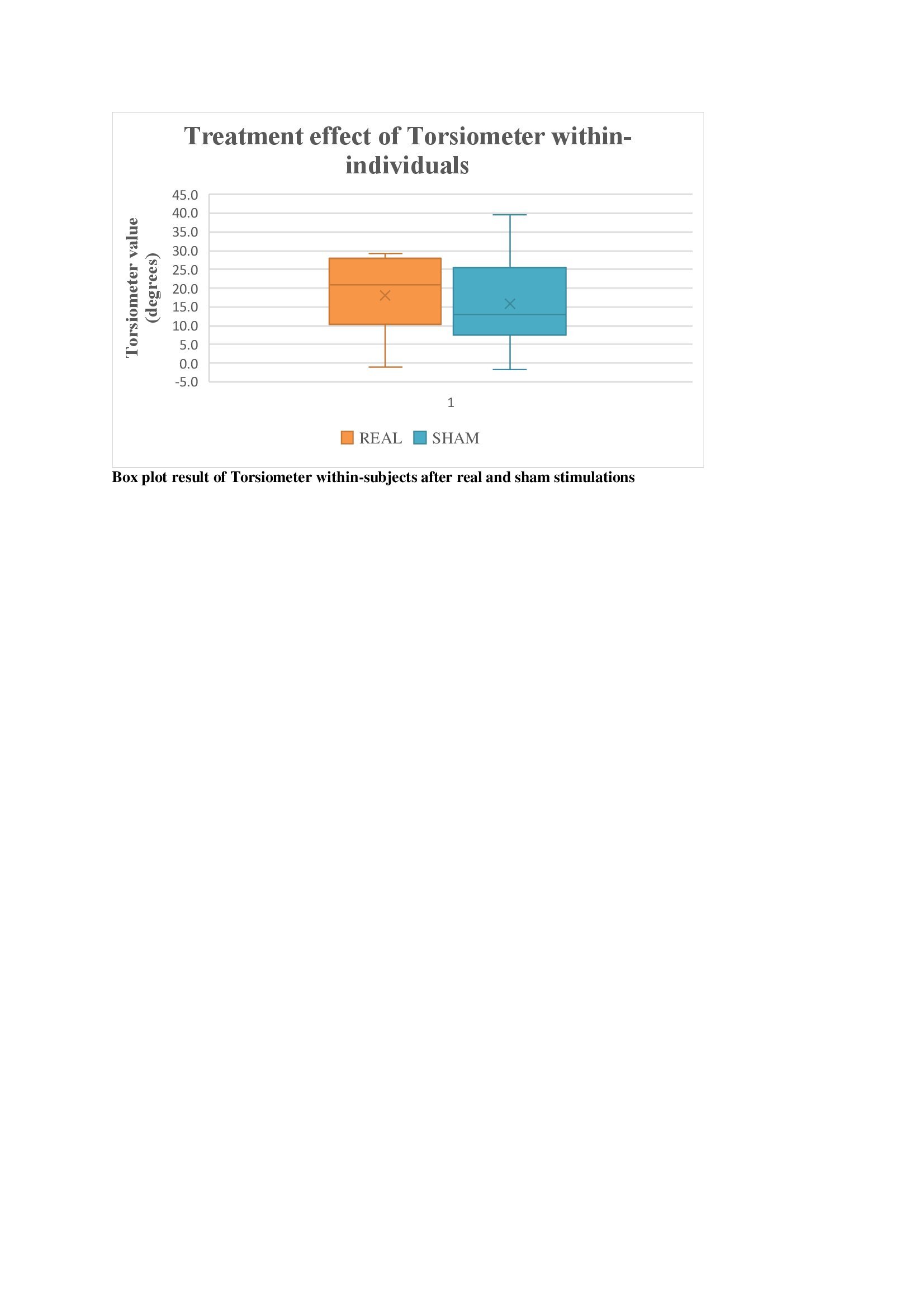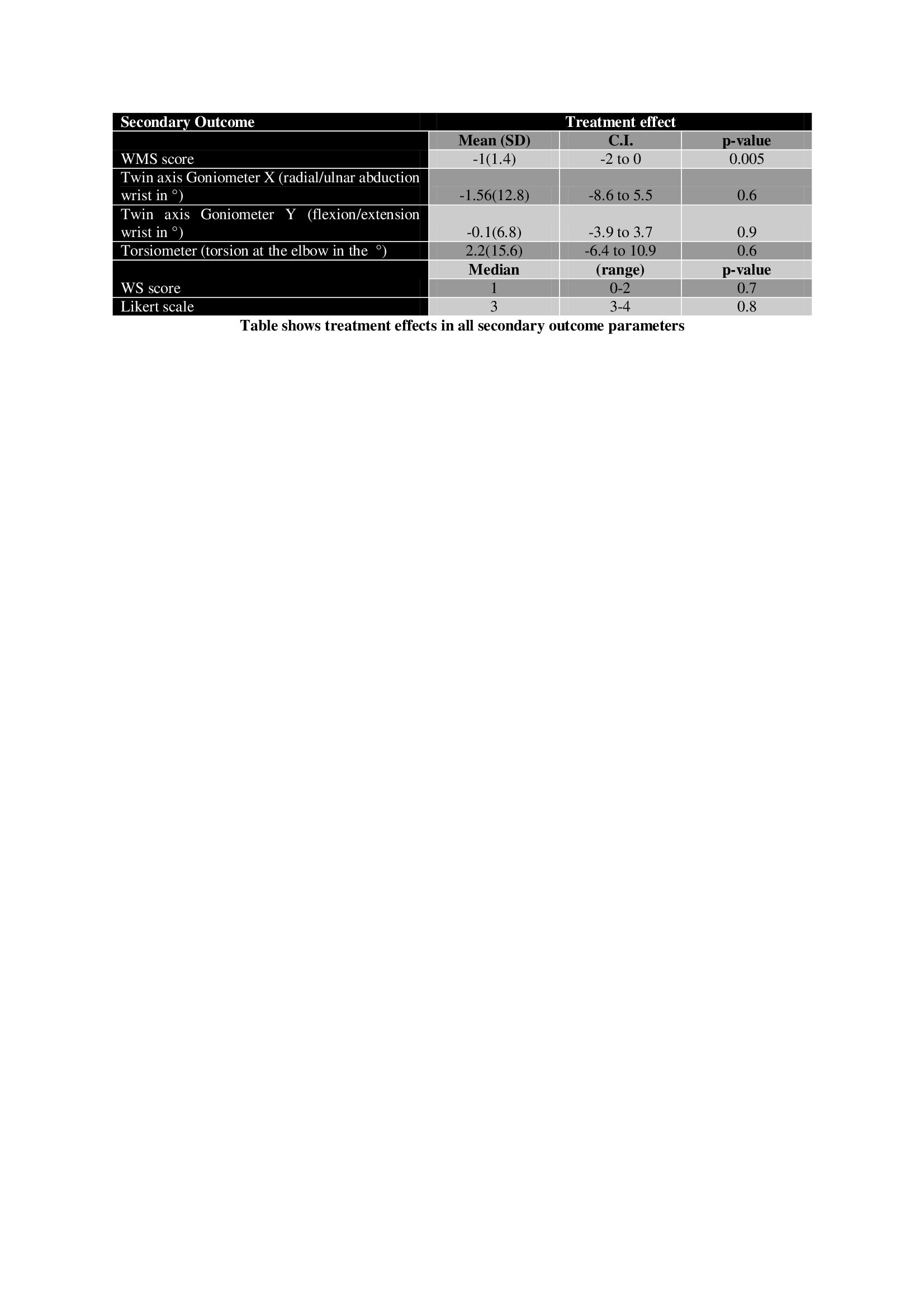Category: Dystonia: Clinical Trials and Therapy
Objective: We used repetitive transcranial magnetic stimulation to test the hypothesis that an inhibitory protocol to the left inferior parietal lobule in right-handed patients with focal hand dystonia will improve the dystonia severity as assessed by the Writer’s cramp rating scale (WCRS)
Background: Dystonia is a network disorder due to impaired homeostatic plasticity and abnormal sensorimotor connectivity. The posterior parietal cortex, specifically the inferior parietal lobule has extensive projections to the premotor cortex which is found to be aberrant in focal hand dystonia (FHD). Modulation of motor areas via stimulation of the parietal cortex may have downstream effects on the premotor cortex, which in turn connects to the M1 hand area
Method: single sessions of low frequency (1Hz) inhibitory rTMS [Intervention] and Sham stimulation [Control] over the left inferior parietal lobule (IPL) in random order, as per the group allotted. Each stimulation session lasted for 20 minutes and 300 pulses in 4 blocks were delivered at 90% RMT to the anatomically localized left IPL. At baseline and the end of each session of rTMS and sham stimulation, WCRS, kinematic analysis using electrogoniometer and torsiometer and subjective improvement by Likert scale were assessed
Results: We recruited 16 right-handed patients with task-specific focal hand dystonia [mean age: 25.1 (range 19-54) years, gender (Men-13), mean duration of symptoms: 8.3 (range 1-25 years)]. The mean WCRS score at baseline was 5.8 ± 3.4 in group A (received 1Hz rTMS initially) and 13.4 ± 5.2 in group B (received sham stimulation initially). An inhibitory rTMS protocol applied to the left inferior parietal lobule resulted in significant improvement in dystonia severity measured by the WCRS total score (WCRS difference REAL minus SHAM mean (SD): -1(1.3), 95% CI -2, -1, p= 0.002) and Writing Movement Score (WMS difference REAL minus SHAM mean (SD): -1(1.4), C.I. -2 to 0, p=0.005) and thus significant treatment effect within individual subjects, irrespective of the sequence in which they received the intervention
Conclusion: In patients with task-specific focal hand dystonia, an inhibitory TMS protocol delivered to the inferior parietal lobule may modulate the abnormally hyperexcitable premotor-parietal-putaminal circuitry and reduce FHD severity
To cite this abstract in AMA style:
S. Bhadran, R. Rajan. Repetitive Transcranial Magnetic Stimulation to the Inferior Parietal Lobule in Task-Specific Focal Hand Dystonia: A Randomized Crossover Blinded Outcome Assessment Study [abstract]. Mov Disord. 2022; 37 (suppl 2). https://www.mdsabstracts.org/abstract/repetitive-transcranial-magnetic-stimulation-to-the-inferior-parietal-lobule-in-task-specific-focal-hand-dystonia-a-randomized-crossover-blinded-outcome-assessment-study/. Accessed April 20, 2025.« Back to 2022 International Congress
MDS Abstracts - https://www.mdsabstracts.org/abstract/repetitive-transcranial-magnetic-stimulation-to-the-inferior-parietal-lobule-in-task-specific-focal-hand-dystonia-a-randomized-crossover-blinded-outcome-assessment-study/

